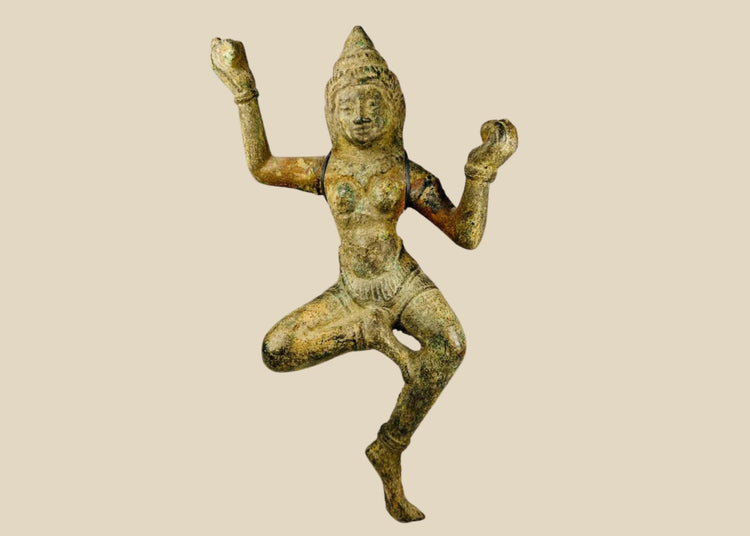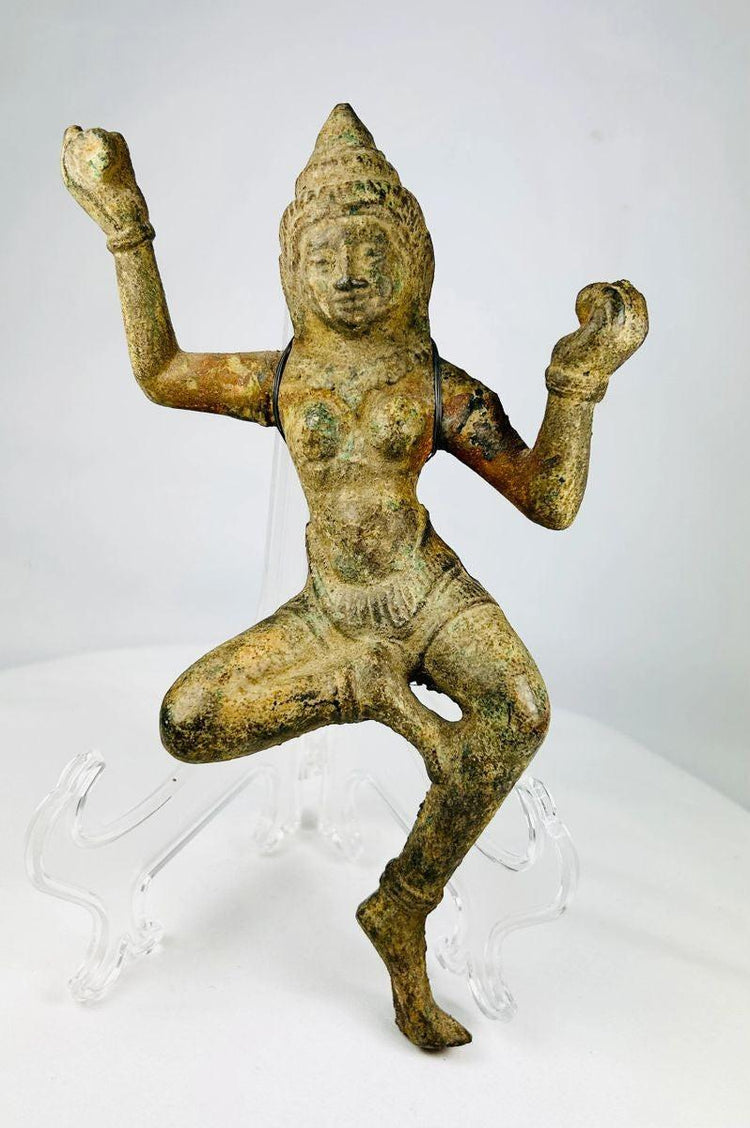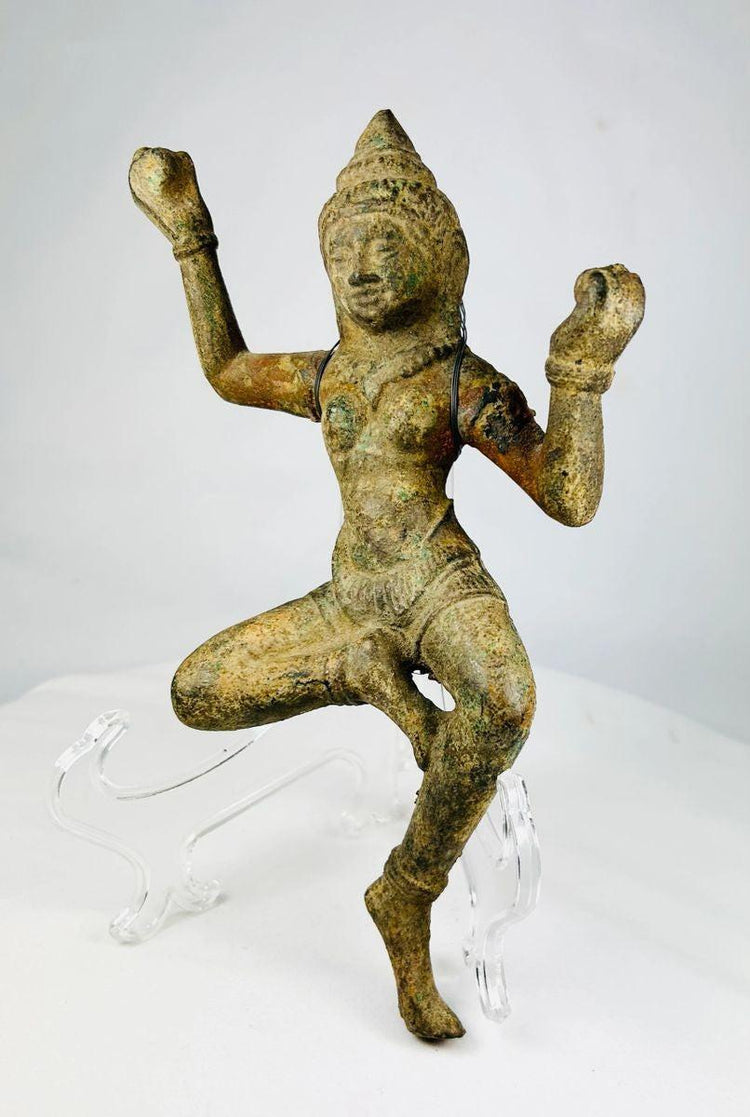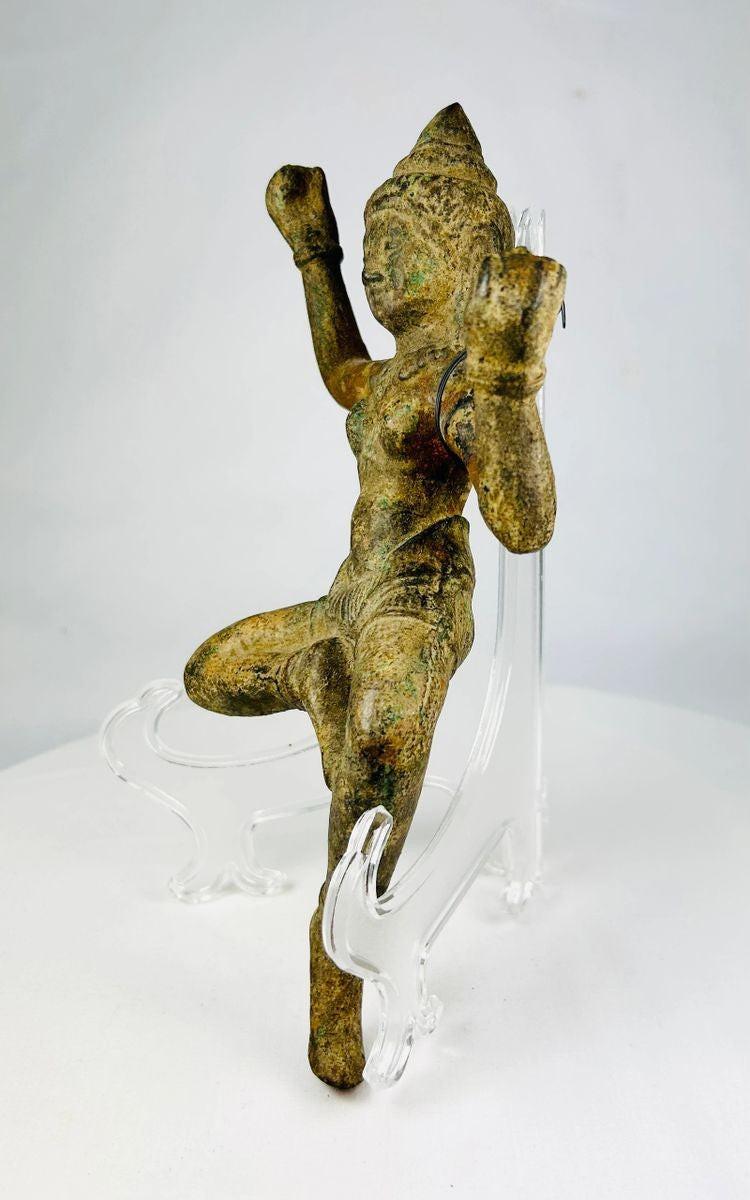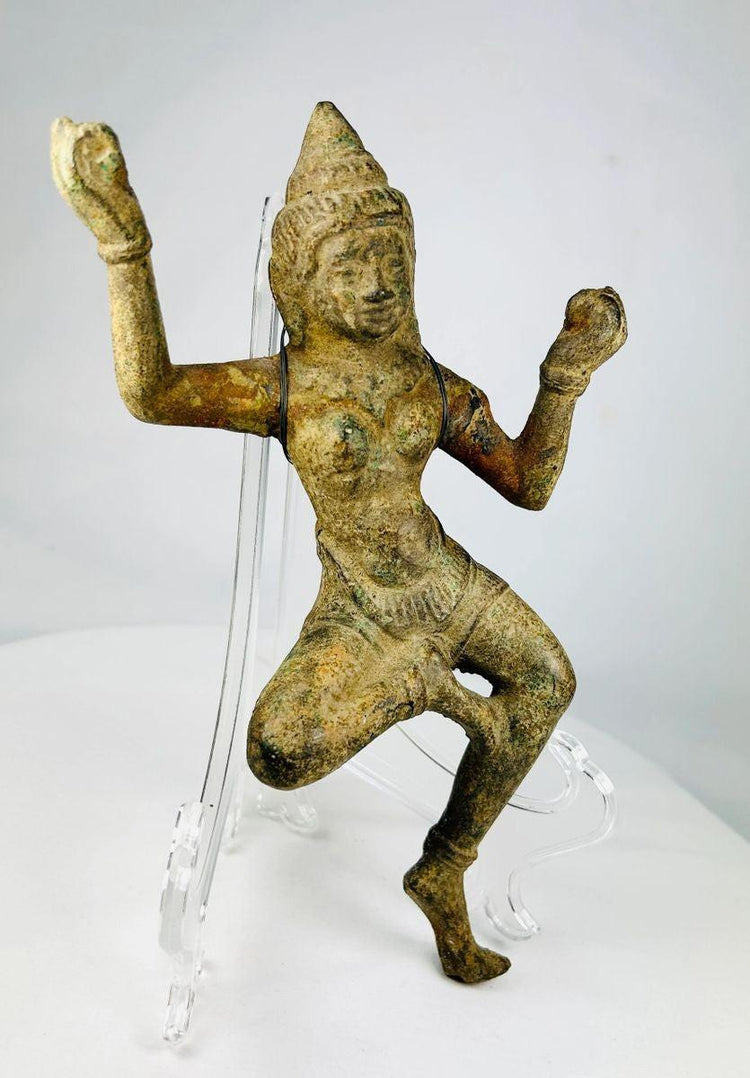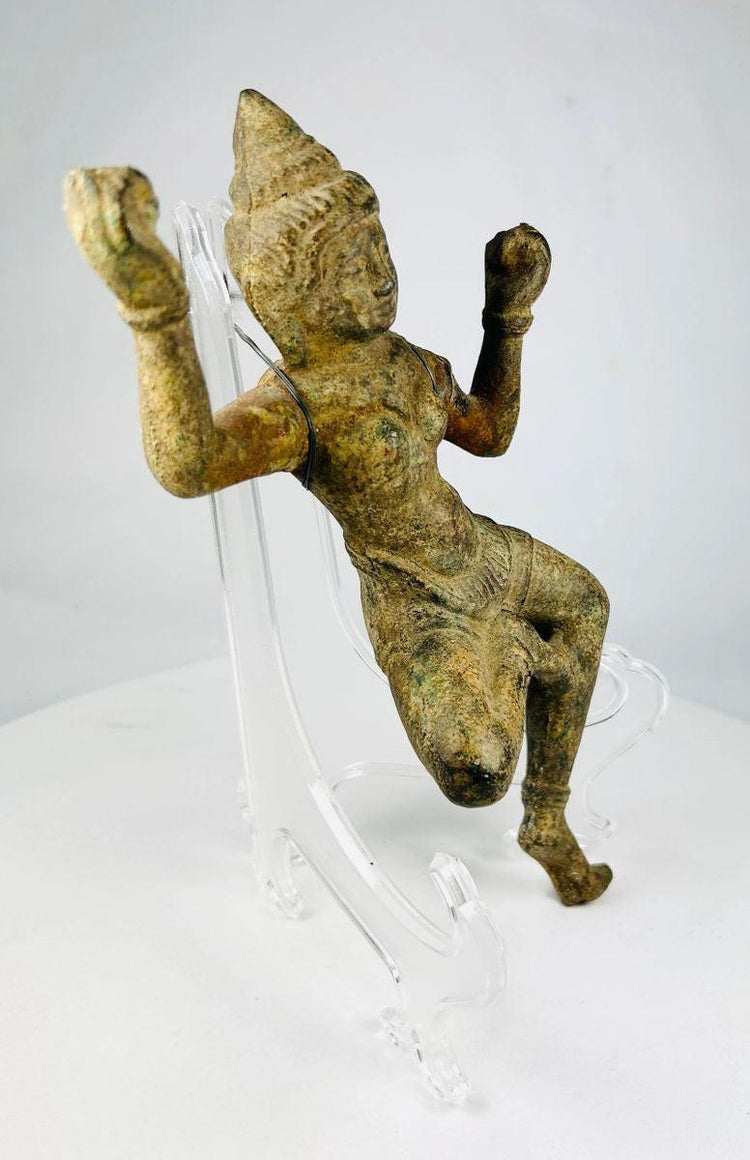Bronze | Dancing Deity Statue | South Asian Origin | Late 17th-19th Century
Description
More
Less
Historical Context & Origin
Region: South Asia
Material: Bronze
Period: Likely Medieval to Early Modern Period (circa 12th–18th Century CE)
Description
This remarkable bronze sculpture portrays a dancing deity, most likely a celestial figure such as a Devata or Apsara from Hindu or Buddhist traditions. Capturing both movement and serenity, the piece reflects the cosmic rhythms and spiritual energy central to South Asian devotional art. The finely carved facial features, ornate headpiece, and flowing attire embody grace and divine presence, suggesting its use within a ceremonial or temple setting.
Features
- Depicted in a balanced dancing pose, symbolizing cosmic rhythm and spiritual liberation
- Exquisite facial features conveying serenity and divine presence
- Ornate headpiece and flowing attire emphasizing elegance and movement
- Intricate ornamentation consistent with devotional sculpture traditions
- Rich green patina from centuries of age, enhancing authenticity and historic appeal
Cultural Significance
Dancing deities occupy a central role in South Asian spiritual traditions, symbolizing harmony, liberation, and the eternal cycles of the universe. Figures such as Devatas or Apsaras were placed in temples or used in ritual contexts to embody divine presence, serving as conduits for worshippers to connect with spiritual energy. This sculpture thus represents not only artistic refinement but also a sacred embodiment of cosmic principles.
Condition
The statue is well-preserved with a stable structure and surface wear consistent with its age. The bronze has developed a natural green patina over time, highlighting both its antiquity and cultural authenticity.
Dimensions (approximate)
Height: 9.5 in
Age
Circa 12th–18th Century CE
Learn More
Read about the ancient history and artistic traditions of South Asian civilizations
Journey through our curated selection of Buddhist and Hindu devotional relics
Description
Historical Context & Origin
Region: South Asia
Material: Bronze
Period: Likely Medieval to Early Modern Period (circa 12th–18th Century CE)
Description
This remarkable bronze sculpture portrays a dancing deity, most likely a celestial figure such as a Devata or Apsara from Hindu or Buddhist traditions. Capturing both movement and serenity, the piece reflects the cosmic rhythms and spiritual energy central to South Asian devotional art. The finely carved facial features, ornate headpiece, and flowing attire embody grace and divine presence, suggesting its use within a ceremonial or temple setting.
Features
- Depicted in a balanced dancing pose, symbolizing cosmic rhythm and spiritual liberation
- Exquisite facial features conveying serenity and divine presence
- Ornate headpiece and flowing attire emphasizing elegance and movement
- Intricate ornamentation consistent with devotional sculpture traditions
- Rich green patina from centuries of age, enhancing authenticity and historic appeal
Cultural Significance
Dancing deities occupy a central role in South Asian spiritual traditions, symbolizing harmony, liberation, and the eternal cycles of the universe. Figures such as Devatas or Apsaras were placed in temples or used in ritual contexts to embody divine presence, serving as conduits for worshippers to connect with spiritual energy. This sculpture thus represents not only artistic refinement but also a sacred embodiment of cosmic principles.
Condition
The statue is well-preserved with a stable structure and surface wear consistent with its age. The bronze has developed a natural green patina over time, highlighting both its antiquity and cultural authenticity.
Dimensions (approximate)
Height: 9.5 in
Age
Circa 12th–18th Century CE
Learn More
Read about the ancient history and artistic traditions of South Asian civilizations
Journey through our curated selection of Buddhist and Hindu devotional relics
You May Also Like


















